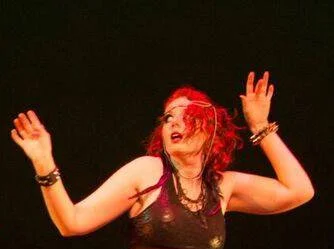Mx. Brighton Brooks
M.ED, R-DMT, LPC
Early in life, I fell in love with psychology and storytelling, as well as all things dance, theatre, music, and art. In 2018 I began to combine those loves through the fields of dance/movement and expressive arts therapies.
Why somatic therapy? I have experienced radical healing through the power of art and dance. Befriending my body helped me tolerate discomfort and stop second-guessing my thoughts and actions. Through expressive art processes, I noticed I not only felt safer and more confident but was also better able to explore different facets of my identity in a more authentic way. Studying group processes, in particular, helped me develop trust in the context of relationships and healing in community in ways nothing else has.
AT A GLANCE (TLDR)
Personal background in music, art, dance, theatre
Queer, trans, & neurodivergent affirming
Sex positive (kink, sex-work, ENM/poly), body positive
Community care and holistic healing focused
Offering body/brain based individual and group therapies using trauma-responsive movement & expressive arts
Experience with teens/adults/elders/artists/athletes on anxiety, depression, dissociation, gender identity, & trauma
In person and telehealth (AK only)
Accepting Premera BCBS, AK Medicaid, & out-of-network benefits (see Therapy page for more info)
My Experience
The bulk of my professional experience is sitting alongside queer, transgender, and neurodivergent teens and adults, dancers and artists. I view human behavior as adaptive responses to dysregulated systems, not broken people. I specialize in working with anxiety, depression, trauma recovery, and gender identity from a neurobiological perspective to facilitate discovery and practice of embodied self-care skills. Choice, play, connection, humor, and compassion are key components in my work as a therapist, teacher, and workshop guide.
I earned my Psychology BA (2005) and Masters of Education in Counseling (2009) from UAF while studying international dance styles from around the world and modern group improv. Most recently, my studies with Embodied Neurobiology (2019-2024) allowed me to complete all requirements to become a Registered Dance/Movement Therapist and finish 3,000 hours of required supervision to be licensed by the state of Alaska as a Licensed Professional Counselor.
How is working with me different?
Some people feel stuck in their heads, or experience times when words are not enough. Somatic therapy offers unique “bottom up” opportunities using movement, breath, and neurobiology to understand what you are experiencing and how to better support yourself holistically. Particularly in working with trauma recovery, we can explore and practice ways of being present to create a different perspective and relationship to events in the past.
Expressive arts provides yet another tool for “getting things out” and challenging our own preconceived notions about trust, self-worth, and safety. At any given session I will work with where you’re at that day and can be as flexible or structured as you need. I do not practice out of workbooks or cookie-cutter solutions that are the same for every client, because there is only one you. I will always do my best to empower you, center your voice, and help you access the magic within you.
What is a typical therapy session like?
We usually start with a verbal check-in, then I may ask follow up questions to see if there are any symbols, themes, or patterns present. We might review any current coping skills and resources or dive into education on a particular topic for a few minutes. At that point I will usually offer one or two ways we could explore what you’re bringing in to the session in connection with any goals we’ve developed together.
This looks different for every client and every session. One day we might paint with our fingers seeking order in chaos. Another we may do guided visualization to find grounding/centering. We might use music or clapping to explore how our rhythms match or clash with others in your life. We might practice specific coping skills like progressive muscle relaxation or make a life size map of your embodied feelings. My lived experience in dance, music, art, and theatre gives me an enormous toolbox to pull from to best suit your needs. Let’s play!
Chat with me
I welcome and encourage questions! To find out if we’re a good fit or decide which service is right for you, please contact me for a free 20 minute discovery call.



